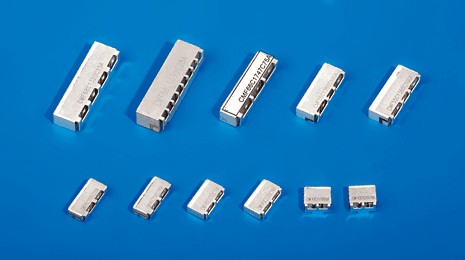Dielectric filters have become an integral component in the design and operation of modern communication systems. Leveraging the properties of dielectric resonators, these filters play a key role in frequency selection, interference management and overall signal quality. With an ever-increasing demand for wireless connectivity across devices and networks, dielectric filters have emerged as critical enablers of higher bandwidth and performance capabilities.
What are Dielectric Filters?
Dielectric Filters make use of the electromagnetic properties of ceramic dielectric materials. Such materials have high dielectric constants in the microwave and millimeter-wave frequency ranges. Dielectric filters contain shaped pieces of these materials known as dielectric resonators. Careful design and placement of these resonators allows for selective passage or rejection of specific frequency bands. Multiple resonators are often arranged in ladder, combline or interdigital topologies depending on the desired filter response characteristics.
Dielectric Resonator Materials
The choice of dielectric resonator material influences the filter’s operational behaviors. Common materials used include ceramic oxides like barium titanate, calcium titanate or strontium titanate. These exhibit dielectric constants from 20 to 150 which enables small resonator sizes. In recent times, new composite materials integrating tunable ferroelectrics have enabled agile filters with reconfigurable frequency behaviors. Overall material properties like frequency stability, temperature tolerance and high Q-factors are critical for high performance filter applications.
Filter Design Techniques
Various analytical and simulation based techniques are employed for dielectric filter design. Lumped element equivalents provide initial designs which are then numerically modeled for electromagnetic simulations. Full-wave solvers account for wave propagation effects and dielectric resonator coupling aspects. Techniques like moment method analysis optimize geometry parameters to achieve prescribed insertion loss, bandwidth specifications etc. Advanced designs also leverage electromagnetic bandgap structures or defected grounds to miniaturize filter dimensions further. Computer aided designs have facilitated multi-stage custom filters for specialized communication needs.
Filter Technology Trends
Ongoing technology trends continue to drive innovation in dielectric filter designs. 5G network deployments require highly selective filters at mmWave bands necessitating new high-K dielectric materials. Mass adoptation of IoT also demands miniature low-cost filters. Tunable filters leveraging ferroelectric varactors offer reconfigurable selectivity. Integrated filter-antenna modules promise compact frontend solutions. Filtration at intermediate frequencies is emerging as well to offset modulation distortions. Adaptive algorithms also optimize filter parameters based on dynamic link conditions. Overall, dielectric filters remain central to enabling the next generation of wireless communication capabilities.
Filter Applications
From cellular phones to satellites to radar systems, dielectric filters find wide application across industries due to their high performance, compact size and stable behaviors. In mobile networks, dielectric duplexers ensure flawless duplex operations while cavity filters isolate uplink/downlink bands. Satellite payloads use combline filters for channel selection in transponders. Radar transmit/receive modules employ high power interdigital filters. Wi-Fi access points use dielectric filtering to optimize signal integrity in congested environments. Military radios contain filter arrays for operating across multiple frequency bands simultaneously. Overall, dielectric filters ensure interference-free communication across both commercial and strategic applications.
Dielectric filters leveraging the unique properties of ceramic resonators have emerged as critical building blocks of modern wireless infrastructure. Filter technologies continue to evolve in line with the growing demands of next generation connectivity solutions. Advances in materials science, electromagnetic simulations, circuit design techniques and tunable/reconfigurable capabilities are expanding the frontiers of high performance dielectric filtering. As wireless networks scale to support exploding data traffic and emerging applications, dielectric filters will remain indispensable for meeting stringent specifications on frequency management, space and cost Optimization. Their central role in the design of communication systems ensures ongoing innovation in this crucial component domain.
*Note:
1. Source: Coherent Market Insights, Public sources, Desk research
2. We have leveraged AI tools to mine information and compile it




